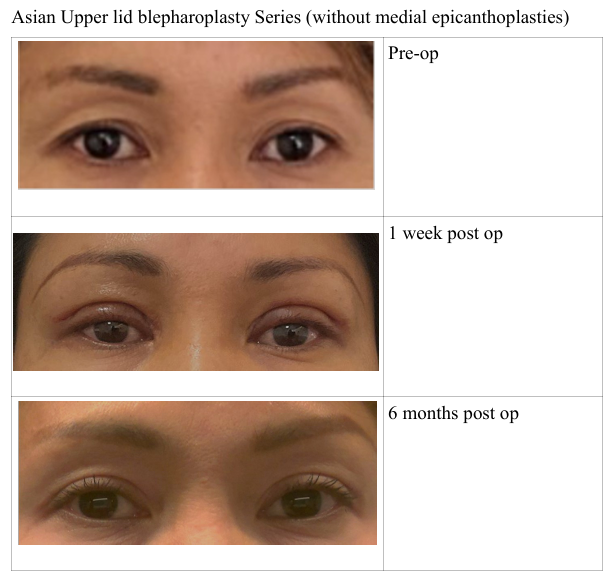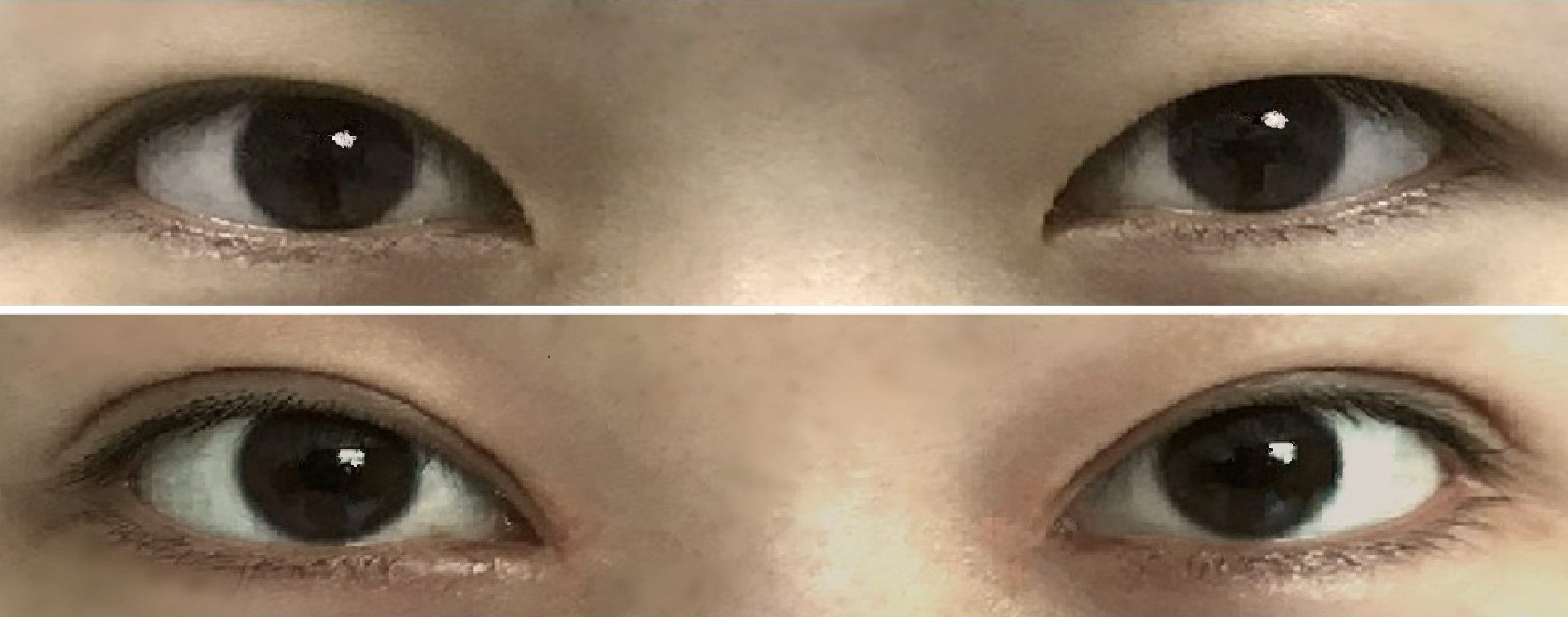Olivia takes a contemporary all-encompassing approach involving surgical and/or non-surgical treatments according to the best interest of each individual patient. Risks and potential complications are associated with all forms of treatment or surgery. Book an appointment with Olivia to discuss the procedures relevant to you and find out more.
SURGICAL
Blepharoplasty
Surgical correction of laxity or 'droopiness' of the upper and/or lower eyelids, including skin, fat and muscle, is called 'blepharoplasty'. There are many different blepharoplasty techniques aimed at addressing the variety of different indications, including function, comfort and appearance. Olivia has extensive experience of blepharoplasties for patients of all racial backgrounds, including Asians, and those of mixed racial heritage, and tailors her surgery to each individual in order to achieve the best possible outcomes.
Upper lid blepharoplasty is the most common oculoplastic surgical procedure worldwide.
Below are example before and after photos and testimonials from patients regarding Olivia's work:
Before and after bilateral upper lid blepharoplasty

'Super happy!'
NB The eyeliner in the photos is permanent tattoo. The patient is makeup free in both photos.

Medial Epicanthoplasty
'Epicanthal folds' are the extra skin some people have covering over part of the inner corner of the eyelids towards the base of the nose. They occur in approximately 2-5% of non-Asians, and between 40-90% of Asians. They are not dangerous or of any functional significance, however, they have the effect of making the eyes look smaller, especially in the horizontal dimension.
Although an epicanthic fold can also be associated with a less prominent or absent upper eyelid crease, the two features are distinct; a person may have both epicanthal folds and an upper eyelid crease, one and not the other, or neither.
Medial epicanthoplasty is an aesthetic surgical procedure that modifies epicanthal folds in order to expand and lengthen the shape of the medial eyelid corner.
This procedure may be performed simultaneously with Asian blepharoplasty (double eyelid surgery) or separately.
The most significant risks are scarring and damage to the tear drainage canals located in close proximity.
Aesthetically, epicanthal folds tend to be worsened by double eyelid surgery without medial epicanthoplasty because double eyelid formation aggravates the vertical tension on the epicanthal skin. Furthermore, the vertical tension can contribute to prolonged post-operative swelling due to blockage of lymphatic flow.
Photographic example before and after medial epicanthoplasty:

Upper eyelid ptosis correction surgery
Upper eyelid ptosis means reduction in the ability of the muscles for lifting the upper eyelid margin (from which the eyelashes grow) to effectively lift up and open the upper eyelid. This results in less of the eyeball being visible and therefore the eyes appear smaller. It also makes people look less alert and tired. If the onset is gradual, most people learn, often subconsciously, to compensate by raising their eyebrows (contributing to forehead muscle fatigue and wrinkles) or tilting the head back unnaturally. In moderate cases the eyelid margin starts to cover the pupil reducing the field of vision. In severe cases the eyelid hangs down far enough to completely cover the pupil, making it difficult to see out at all.
In age-related cases upper eyelid ptosis is most commonly caused by reduction in the strength of the attachment of the tendon at the end of the main muscle for lifting the upper lid margin to the connective tissues inside the eyelid itself. However, inherited disorders and other diseases or injuries that effect the upper eyelid lifting muscles or their nerve supplies can also cause upper eyelid ptosis.
Ptosis correction surgery aims to restore the eye-opening function of the upper eyelid. This results in the eyes looking bigger and more alert, and eliminates any ptosis-related obstruction of the field of vision, as well as any compensatory forehead muscle contraction or head tilt.
Direct Eyebrow Lift Surgery
Eyebrow lift surgery can be performed through a variety of approaches, including directly through a skin incision just above the eyebrow to be lifted. This is known as 'Direct eyebrow lift surgery'.
Alternative forms of treatment to elevate eyebrows include: eyebrow lift surgery via an endoscopic or 'keyhole' approach, avoiding the skin incision and subsequent surgical scar directly above the eyebrow to be lifted, face lift surgery, and non-surgical options, such as those involving injections.
NON-SURGICAL
Some issues are best addressed by non-surgical treatment/s or a combination of surgical and non-surgical treatments.
Olivia considers all available treatment options in order to achieve the best possible results for her patients, including advanced applications of autologous tissue products and tissue-specific stem cell derivatives.
Olivia is not biased by any commercial endorsements, and always compares the most natural solutions with any involving artificial products.
Furthermore, as both a medical and scientific doctor in relevant fields, and living and working in different parts of the world, Olivia is ideally placed to consider each technique and product available from an independent scientific point of view and offer the best of the best to her patients.
